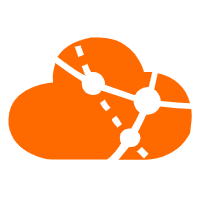In the face of the immense opportunities and challenges that IoT brings to the market, carriers urgently need to build core competitiveness by executing strategic transformations to adopt valuable platforms and application service layers in the Internet of Things (IoT) market.
How carriers adapt to and lead the IoT transformation will determine their positions in the future market. The IoT transformation not only involves the use of new technologies but also involves the transformation of management systems, service models, and business models. Therefore, carriers should adopt strategies from a comprehensive consideration of centralization, scale, and value.
In this article, we will look at four simple but important ways for carriers to improve their enterprise IoT services.
On the network level, carriers must transition to composite networks that support multiple communication technologies and centers on mobile network services that allow people to communicate with each other.
LTE-based networks and hybrid NB-IoT/eMTC networks can meet the requirements of IoT communication scenarios regarding wide coverage, low power consumption, low costs, and a certain degree of portability. Additionally, through sustained network construction and optimization, carriers can provide the flexible network communication support most suitable to the needs of IoT industry customers and move toward 5G. This will allow them to comprehensively cover the needs of narrowband massive-volume applications, high bandwidth applications, critical applications, and other IoT scenarios.
The requirements of IoT connection services are completely different from those of traditional person-to-person communication connection services. Carriers have to cater to a wide range of enterprise IoT customers and industrial applications. These applications have special connection service requirements including on-demand and independent connection management and centralized and global connection management services.
Industry and enterprise clients use mobile network connections for not only daily communications but also make these connections a part of their applications and end products. They require the independent management of mobile network connection lifecycles. They need to manage connection statuses based on the conditions of production, logistics, sales, and other stages, rather than having all operations performed by carriers.
At the same time, they need to define specific aspects of the connection lifecycle, such as testing status support. This entails carriers to provide self-service via IoT connectivity management platforms (CMPs) to industry and enterprise customers rendering IoT connection management services and APIs. Additionally, carriers must make it easier for customers to integrate IoT connection management with their existing IT systems and business processes.
Based on the practical experience of major carriers, most carriers use an independent and exclusive IoT CMP, including a dedicated IoT core network system, to meet the flexible management needs of industry and enterprise customers. This provides industry and enterprise users with connection management functions, data plans, billing rules, dedicated numbers, dedicated APNs. It also supports business processes designed for IoT scenarios that differ completely from traditional person-to-person communication services, as well as portal and API systems for enterprises to use.
IoT CMPs have gone through three stages of development.
In the first stage, enterprises purchased connections from carriers as needed for business. Meanwhile, they also requested the carriers' permission to integrate specific connection management functions into their own IT systems and business processes. This method lacked centralized interfaces and when using multiple carriers, caused great difficulty in integration and maintenance. Additionally, because of the varying quality of different networks, the result often fails to meet the enterprise requirements.
In the second stage, to dominate the IoT connection service market, carriers began to use centralized IoT CMPs to provide centralized management portals and APIs to enterprise customers. Based on the industry's or enterprise's IoT connection management needs, the carrier constructed a dedicated IoT CMP. Because these dedicated platforms offered a complete range of functions, they were better able to meet the needs of industries and enterprises. However, these dedicated IoT CMPs involved considerable investment over a long time, while preventing centralized global connection management across multiple carriers.
We are currently in the third stage, where more and more carriers are adopting third-party universal CMPs or combining these with their own self-built CMPs. At the same time, carriers are forming alliances to encourage broad cooperation and satisfy enterprises' global IoT deployment and centralized management needs. This approach allows carriers to gain a competitive advantage in the market. The advantage of using third-party universal CMPs is that enterprise customers can use diverse platforms with the same portal and APIs.
This way, enterprises can centrally and globally manage connection services provided by different carriers in different countries. Thus, carriers in a specific market who adopt a universal third-party platform can achieve a competitive advantage in their home market. Because global IoT connection management service is available across carriers, individual carriers no longer have to create their own IoT CMPs, and enterprises no longer face the difficulty of integrating multiple platforms from multiple carriers. Therefore, third-party universal IoT CMPs have become the preferred choice of many carriers.
In conclusion, carriers now choose to use a universal CMP or a universal CMP + self-built CMP based on their IoT connection business volume. Following this trend, more and more carriers have begun adopting multi-platform strategies to meet the centralized and global connection management needs of industry and enterprise users.
Find similar articles and learn more about Alibaba Cloud’s products and solutions at www.alibabacloud.com/blog.

2,593 posts | 792 followers
FollowAlibaba Clouder - August 5, 2019
Alibaba Clouder - September 17, 2019
Alibaba Clouder - June 26, 2018
Alibaba Cloud Native Community - July 20, 2021
Alibaba Clouder - April 13, 2018
Alibaba Clouder - July 19, 2018

2,593 posts | 792 followers
Follow EDAS
EDAS
A PaaS platform for a variety of application deployment options and microservices solutions to help you monitor, diagnose, operate and maintain your applications
Learn MoreLearn More
 VPC
VPC
A virtual private cloud service that provides an isolated cloud network to operate resources in a secure environment.
Learn MoreMore Posts by Alibaba Clouder